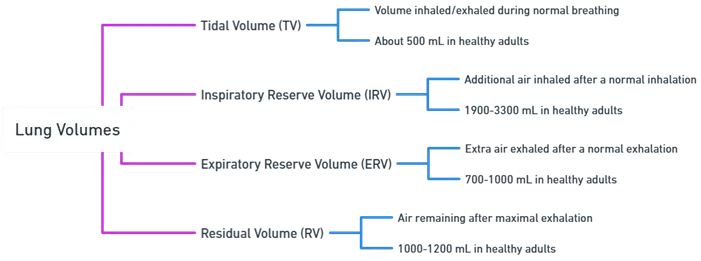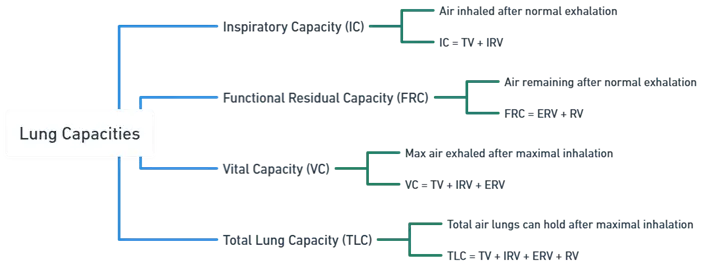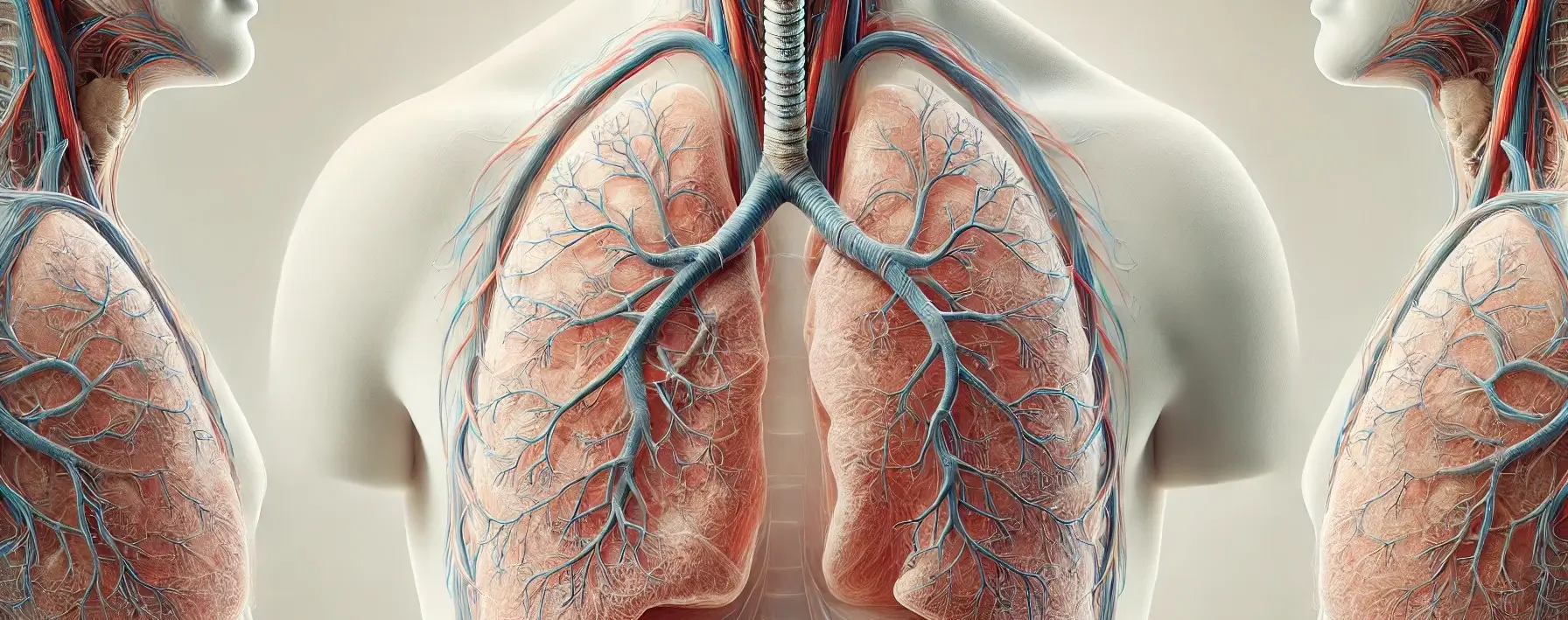- Lung volumes and capacities are measurements that reflect the mechanics of breathing, and the volumes of air associated with different phases of the respiratory cycle.
- These measurements are crucial for assessing respiratory health and function.
- There are four primary lung volumes and four lung capacities, which are combinations of different volumes.
Lung Volumes:
-
Tidal Volume (TV)
- Definition: The volume of air inhaled or exhaled during normal, quiet breathing.
- Average Value: Approximately 500 mL in healthy adults.
-
Inspiratory Reserve Volume (IRV)
- Definition: The additional volume of air that can be forcefully inhaled after a normal tidal inhalation.
- Average Value: Around 1900-3300 mL in healthy adults.
-
Expiratory Reserve Volume (ERV)
- Definition: The extra volume of air that can be forcefully exhaled after a normal tidal exhalation.
- Average Value: Approximately 700-1000 mL in healthy adults.
-
Residual Volume (RV)
- Definition: The volume of air remaining in the lungs after a maximal forced exhalation. This air cannot be expelled and helps maintain lung function.
- Average Value: Typically, 1000-1200 mL in healthy adults.

Lung Capacities:
-
Inspiratory Capacity (IC)
- Definition: The total volume of air that can be inhaled after a normal tidal exhalation.
- Formula: IC = TV + IRV
-
Functional Residual Capacity (FRC)
- Definition: The volume of air remaining in the lungs after a normal tidal exhalation.
- Formula: FRC = ERV + RV
-
Vital Capacity (VC)
- Definition: The maximum volume of air that can be exhaled after a maximal inhalation.
- Formula: VC = TV + IRV + ERV
-
Total Lung Capacity (TLC)
- Definition: The total volume of air that the lungs can hold after a maximal inhalation.
- Formula: TLC = TV + IRV + ERV + RV
Advertisements


